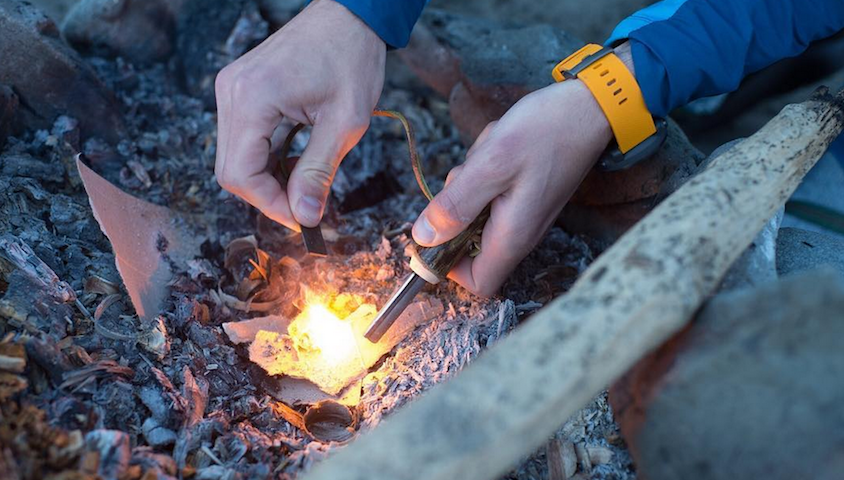Suunto Traverse – $629.95
The Suunto Traverse is a solid and well-built piece of kit, clearly designed by makers of precision diving computers and top-quality surveying equipment. It sits solidly on your wrist and feels indestructible, and offers in one package a GPS system, a step counter, compass, solar calendar, barometer, flashlight, and, of course, a watch. It’s comfortable to wear and it is on my wrist as I type this review.
The Traverse and I went on several adventures: below the towers of Melbourne CBD, along a rocky shore in SE Tasmania, and in mountain forests above Hobart. I was delighted with the “all-in-one” nature of the device. Once you figure out the sometimes obscure sequence of buttons, it’s quick and easy to save a waypoint, start a track, or navigate back to a point. You could do it on the run, in the dark, or in a snowstorm. It reliably held a signal and all of the sensors worked as expected.
The Traverse does have some strategic shortcomings. Most importantly, the Android app simply would not connect to the Traverse. The Google Play reviews indicate that mine was not an isolated experience (presumably the iPhone app is more reliable).
Once I returned home, I did manage to connect the watch properly to a Mac computer using the proprietary cable, and it uploaded the tracks nicely to the Suunto Movescount website. This is more limiting than the mobile ability to share, download, and backup tracks on the move with an on-line smartphone, but it did work flawlessly.
In the absence of an internet connection, it does not appear you would be able to access the track information on either computer or smartphone, but you do have relatively capable navigation tools within the watch itself. Once on the site, there was a beautiful selection of graphs and tables to tell me about the track, and critically, a button to export the “move” as a KML or GPX. However, this dependence on a website combined with the completely non-functional Android app strikes me as a poor strategic direction by quality craftspeople who have not invested enough in the connectivity aspects of this beautiful device.
Over the years, I’ve relied on digital navigation aids in a number of professional circumstances – walking steep mountain gridlines on raptor surveys, searching for individual trees in remote forests, and marking progress on a well-maintained track. I’ve purchased an Android phone selected specifically for the ability to swap out batteries, and have been able to do complex navigation and data-handling with the fantastic app Locus Pro. If that combination is the best possible solution for a pocket mapmaking computer, then perhaps you could think of the Suunto Traverse as the best possible all-in-one compact GPS tool.
Overall, I think the Suunto Traverse is a wonderful piece of kit in and of itself, but one that is dependant on a limited and unreliable set of software tools. Ultimately, though I’d be far more impressed if it had a working Android app and accessible open standards; for example, a standard USB cable and the ability to directly transmit the GPX/KML map files to a phone without the Movescount website and an internet connection. It seems likely that Suunto will develop these features in the near future as competition heats up from the more general-purpose smartwatches arriving on the market.
For the remote wilderness visitor, this is a compact and durable tool that will help you to pay attention to the world around you, rather than the dancing pixels of your smartphone screen. Its ability to guide you back to a waypoint may indeed save your life one day. It’s waterproof, inobtrusive, and clearly built to exacting standards – it will be of reliable assistance for many years of your outdoor adventures.



